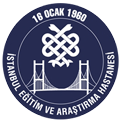ABSTRACT
Introduction:
The aim of the present study is to assess the effect of laser therapy on pain, quality of life, and muscle strength in patients with carpal tunnel syndrome (CTS).
Methods:
A total of 60 patient files diagnosed with CTS with history, physical examination, and electromyography (EMG) were analyzed retrospectively. Thirty patients who had received splint, exercise, and laser therapy were considered as the treatment group, and 30 patients who had received splint and exercise and waiting for laser therapy were considered as the control group. Demographic properties (age, gender, body mass index, dominant hand, helded hand, and repeated hand movements), clinical symptoms and physical examination results (Tinel’s sign and Phalen’s maneuver), EMG results, pain severity, quality of life, symptom and function severity scores, and muscle strength (triple and rough grip) were recorded from the patient’s files. We evaluated pain with visual analog scale (VAS), quality of life with Health Assessment Questionnaire (HAQ), function with Boston Carpal Tunnel Scale, and muscle strength with pinch meter and dynamometer. Evaluations were made before treatment and at 2 and 4 weeks.
Results:
There was no statistically significant difference between the groups in all parameters before the treatment. At second and third evaluations, statistically significant progress was determined in VAS, HAQ, and Boston symptom and function score in the control group. In the treatment group, statistically significant improvement was determined in pinch meter and dynamometer measures and all other parameters. Furthermore, all parameters, except for Boston function scores, were improved in the control group. There was no significant difference on physical examination results between the groups and between themselves.
Conclusion:
As a result, we concluded that the combination of splint, exercise, and laser therapy was effective in the conservative treatment of CTS. With the addition of laser therapy to splint and exercise, the treatment results become more successful. Therefore, we hypothesized that laser therapy can be used more in the conservative treatment of CTS.



